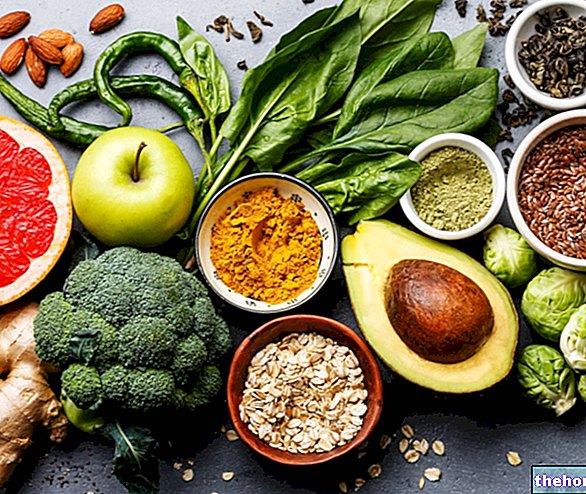
Precisely because of their essentiality, the nutritional intake of omega 3 must not be neglected; it is therefore advisable to periodically use the best recipes that contain them.
To remember:
- Omega 3s have many vital functions and any deficiency can be very harmful to health;
- To be precise, the only completely essential omega three is ALA, from which the body (via enzymes) is also capable of obtaining EPA and DHA. On the other hand, this ability can be compromised by aging, by certain drug therapies, eating disorders and other factors;
- Omega 3s are very susceptible to oxygen, free radicals, light and heat.
The best recipes for a diet rich in omega three are those that contain higher levels of ALA, DHA and EPA in the "finished dish". This characteristic is the result of the union between the type of raw material and the processing technique.
contain the essential omega 3s:
- Primary sources of alpha linolenic acid (ALA): they are contained in fatty foods of vegetable origin. They abound in certain seeds and especially in their "living" part (germ or embryo). Secondly, they are also found in fleshy fruits, vegetables etc;
- Primary sources of eicosapentaenoic and docosahexaenoic acid (EPA and DHA): they are mainly contained in fishery products (fish, crustaceans and molluscs) and in algae (unicellular and multicellular).
Note: from the sources of essential omega-three fatty acids, both animal and vegetable, oils that are particularly rich in nutrients can be obtained. On the other hand, choosing foods richest in ALA, EPA and DHA may not be enough.
. Foods rich in omega 3 must be stored briefly and above all:- In the cold (when possible, better below zero);
- In the dark;
- Hermetically sealed.
Note: it is often necessary to enrich the oils with antioxidants and especially vitamin E.
- Prevent "contact oxidation": in addition to oxygen (present in the air) and free radicals (present in the food itself), the main source of oxidation (which mainly affects vitamins, fats and minerals) is represented by contact with metals. It mainly takes place during cutting (knife, slicer blade, butcher's saw, etc.) and in storage (containers, etc.). Today, stainless steel is widely used which, among others, is considered the least "reducing". It is not necessarily worth it but, from this point of view, it would be preferable to focus on innovative materials such as ceramic (for knives) and synthetic polymers (for containers);
- Cooking: to maintain the integrity of the omega 3 it is advisable (if possible) to eat them raw. Intense cooking destroys omega three almost instantly, but moderate cooking often takes longer (with a similar effect). It is recommended not to exceed 100 ° C for a few minutes.
- Avoid dispersion: by preserving foods rich in omega three in oil, these are diluted and lost. Even if the fats do not dissolve in water, the same happens during boiling (they are visible as superficial "holes").
The seeds to be boiled to make first courses are mainly chia, flax and soy. From them we obtain a flour that is widely used for basic doughs:
- For those leavened (bread), it is also necessary to use a part of flour with gluten;
- For pasta it is not essential, but the gluten-free mixture is less resistant to cooking.
Nuts and hemp seeds can be eaten as a snack or in the form of flour.
By squeezing all the seeds rich in omega 3, an oil is obtained that can be used raw on the side dishes; on the other hand, not all of them are very pleasant to the taste (especially kiwi, blueberry and vine).









.jpg)


















